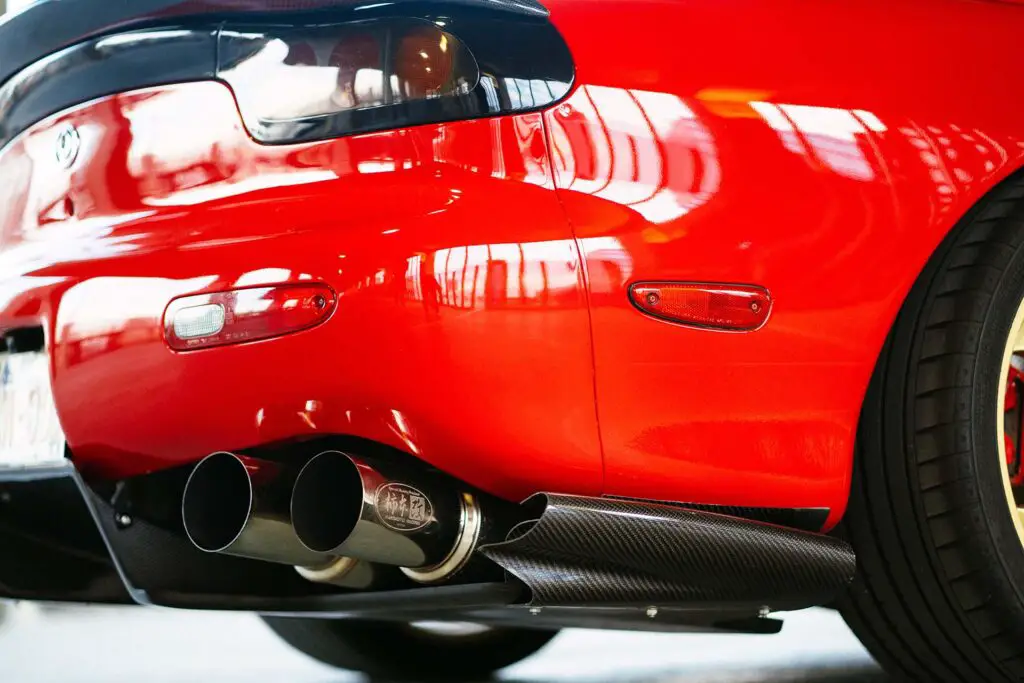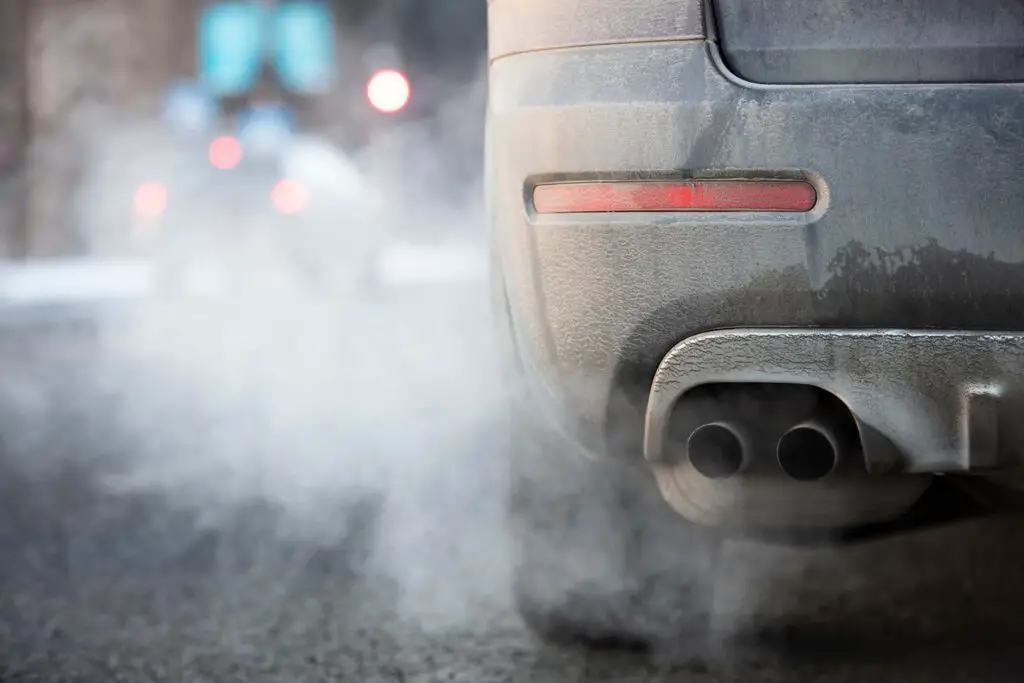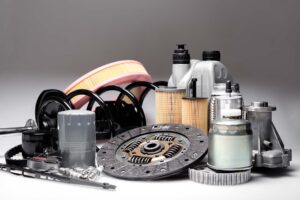Driving along the open road, you hear the soothing hum of your car’s engine without much thought. But have you ever wondered – what is a muffler in a car? That unassuming piece of equipment under your car has a bigger role than you might think. So, let’s explore its purpose and function, shedding light on this often overlooked but vital component.
Also known as a damper, this is an essential component of the exhaust system, designed to reduce noise and control exhaust flow. Comprising various internal parts like perforated tubes and baffles, mufflers come in various types, including chambered, turbo, and straight-through, each offering unique sound and performance characteristics. Understanding these aspects is key to finding the perfect fit for your particular four-wheeler.
What Is a Muffler in a Car?
The muffler’s history dates back to the early 20th century when vehicles were increasingly becoming a staple in everyday life and a common sight on famous routes in the US. At the time, the roaring noise of engines was far from pleasing – the evolution of cars had to continue forward and provide a simple solution for this noisy problem.
That’s exactly what Hiram Percy Maxim did in 1897 with his ingenious invention. Initially simple in design, mufflers have evolved significantly over the years, gradually becoming more efficient and environmentally friendly.
It’s the Vital Component of the Exhaust System
This vehicle component is not just about noise reduction – it’s crucial to your vehicle’s exhaust system, no matter if you’re driving a small city car or a big family SUV. Here’s an overview of the different types of mufflers commonly used in vehicles:
| Type | Main Characteristics |
| Chambered | A series of chambers and baffles reflect and cancel out sound waves |
| Turbo | Perforated tubes and sound-deadening materials absorb sound waves |
| Straight-Through | Absorption material around a straight perforated pipe reduces noise |
| Resonator | Works with the main muffler to further reduce noise |
Whether you’re seeking performance enhancements or a particular sound signature, this wide range of options should definitely have something for your vehicle and preferences. But, as mentioned, it’s not only about the noise, so let’s dive into its inner workings and answer the question – what does a muffler do?

What Is the Purpose of a Muffler?
The roaring of an engine might sound exciting on a racetrack, but it’s far from ideal when you’re cruising down the highway or navigating through one of the cities with the worst drivers. And that’s where this vital component of the exhaust system comes in.
By using various techniques to dampen and control the sound produced by the engine, a muffler makes your ride smoother and far more pleasant. The noise control isn’t just about comfort either – it meets legal noise restrictions in many areas, preserving the peace and tranquility of our neighborhoods.
What Does a Car Muffler Do Besides Noise Reduction?
The muffler’s role goes beyond just soothing your ears. Actually, this component plays a crucial part in your vehicle’s performance and fuel efficiency. By ensuring that the exhaust gasses flow out of the engine in a controlled manner, a well-designed piece can help improve engine response and fuel economy.

What Are the Components of a Car Muffler?
This vehicle component might look like a simple metal container from the outside, but it’s a complex piece of engineering on the inside. The typical piece is a carefully designed assembly of various internal components, each playing a specific role in sound reduction and exhaust flow control.
What Is a Muffler in a Car Composed Of?
Here’s a breakdown of the internal components, along with their respective roles:
- Perforated tubes – hole-filled tubes that guide exhaust gasses through the muffler’s body, allowing sound waves to escape and interact with sound-absorbing material,
- Baffles – positioned within the body, baffles reflect sound waves back on themselves, effectively canceling them out and reducing noise,
- Chambers – these compartments are designed to reflect and cancel out specific sound frequencies,
- Resonating chambers – a specialized form of chambers, these are tuned to specific frequencies, helping to further fine-tune the sound profile of the exhaust,
- Sound-absorbing materials – fiberglass and other insulating materials are typically used, packed around the perforated tubes to absorb sound waves.

What Are the Different Types of Mufflers?
Now that you’ve gained a better understanding of how a muffler works, let’s get back to the beginning and delve deeper into the different types and designs we’ve mentioned when discussing the basics.
The type installed in your vehicle can significantly impact its sound and performance, so it’s important to break down the unique characteristics and applications of each design:
Chambered Mufflers
This type is a popular choice among gearheads looking for that classic, aggressive sound. Inside of it, you’ll find a series of interconnected chambers, separated by baffles. As exhaust gasses and sound waves pass through these chambers, they bounce off the walls and each other.
This series of reflections and interactions cancel out certain frequencies, creating a distinct sound profile. Because of their unique design, chambered mufflers are often favored in muscle cars, off-road driving vehicles, and other performance-oriented four-wheelers.
Turbo Mufflers
For those seeking reduced noise and improved flow of exhaust gasses, a turbo silencer might be the answer. Named after its resemblance to a turbocharger’s shape, this design utilizes perforated tubes wrapped in sound-deadening materials.
As exhaust gasses travel through the twisting paths inside, sound waves are absorbed, resulting in a quieter exhaust note. This more labyrinthine design can cause some restrictions in the flow, but modern mufflers are engineered to minimize this effect, making them suitable for a wide variety of vehicles.
Straight-Through Mufflers
Also known as a glasspack, the straight-through damper represents simplicity and performance. At its core is a straight perforated pipe, surrounded by sound-absorbing materials like fiberglass. Because of the straight path, exhaust gasses flow through with minimal resistance, often leading to increased horsepower.
The noise reduction is less effective compared to other types, so these mufflers tend to produce a louder, rawer sound. Ideal for performance enthusiasts and racing applications, straight-through mufflers offer a blend of sound and speed that’s hard to resist.
What’s the Impact of Mufflers on Performance and Fuel Efficiency?
Some might argue that a damper, with its intricate chambers and baffles, restricts the exhaust system, thereby hindering the engine’s power output. While there might be some truth to this notion in the context of poorly designed or overly restrictive mufflers, it’s far from the full picture. In reality, well-designed mufflers can definitely enhance engine efficiency and performance.
By ensuring that the exhaust gasses flow out of the engine in a controlled manner, a quality damper minimizes back pressure without overly suppressing the engine’s sound. The key lies in finding the balance between noise reduction and performance considerations. A quality piece that’s designed with both of these aspects in mind can contribute to an optimized exhaust flow, potentially increasing horsepower and fuel efficiency.

What Are the Signs of a Malfunctioning Muffler?
A damper might be out of sight, but it should never be out of mind. A failing or damaged piece can present some noticeable symptoms that require attention:
- Increased noise – a sudden increase in exhaust noise, including rumbling or roaring sounds,
- Decreased performance – you might notice a drop in power or fuel efficiency,
- Unpleasant odors – foul smells inside or around the car may indicate exhaust leaks,
- Visible damage – rust, holes, or other visible signs of wear and damage on the piece itself,
- Excessive condensation – water dripping from the exhaust pipe, especially during non-winter months.
Regular Maintenance Is Key to a Quiet and Smooth Ride
A malfunctioning damper is not just a noise or performance issue – it can lead to other problems within your vehicle, which, in turn, can result in costly repairs. Leaks or blockages inside of it can cause back pressure issues, affecting engine performance. Moreover, a leaking piece can allow harmful exhaust gasses to enter the cabin, posing health risks.
Therefore, regular inspections and maintenance are essential. Don’t wait for these symptoms to turn into major problems – professional diagnosis and timely repair or replacement can ensure that your damper continues to fulfill its role efficiently, keeping your ride smooth, legal, and pleasant.

What Is a Muffler in a Car? Understanding This Question Will Bring You Closer to Becoming a Vehicle Expert
So there you have it – the humble damper, often hidden away under your vehicle, is far more than a simple noise suppressor. It’s an engineering marvel that plays a vital role in making your ride smoother, more efficient, and even more pleasant to the ears. So, next time you’re out on the road, give a silent nod to this vital piece of the exhaust system. It’s doing more for you than you might think!
Frequently Asked Questions
What Is the Primary Function of a Car Muffler?
The primary function of a car muffler is to reduce the noise produced by the exhaust gasses as they exit the engine. It does this through a complex arrangement of chambers, baffles, and sound-absorbing materials that dampen and control the sound waves.
Can a Damaged Muffler Affect Fuel Efficiency?
Yes, a damaged or malfunctioning muffler can cause back pressure issues, affecting engine performance and leading to a decrease in fuel efficiency. Regular inspection and maintenance can prevent such problems and keep your vehicle running optimally.
What Are the Different Types of Mufflers?
The three common types of mufflers are chambered, turbo, and straight-through. Each type has unique characteristics, with chambered providing a classic aggressive sound, turbo focusing on reduced noise, and straight-through offering minimal resistance for increased performance.
How Can I Tell If My Muffler Is Malfunctioning?
Common signs of a malfunctioning muffler include increased exhaust noise, decreased performance, foul smells, visible damage, and excessive condensation from the exhaust pipe. Prompt attention to these signs can prevent further damage and maintain your car’s performance.
Do Mufflers Have Any Impact on Performance Apart from Noise Reduction?
Yes, well-designed mufflers can positively impact engine efficiency and performance by ensuring controlled exhaust flow. Finding the right balance between noise reduction and performance considerations can increase horsepower and fuel efficiency.








